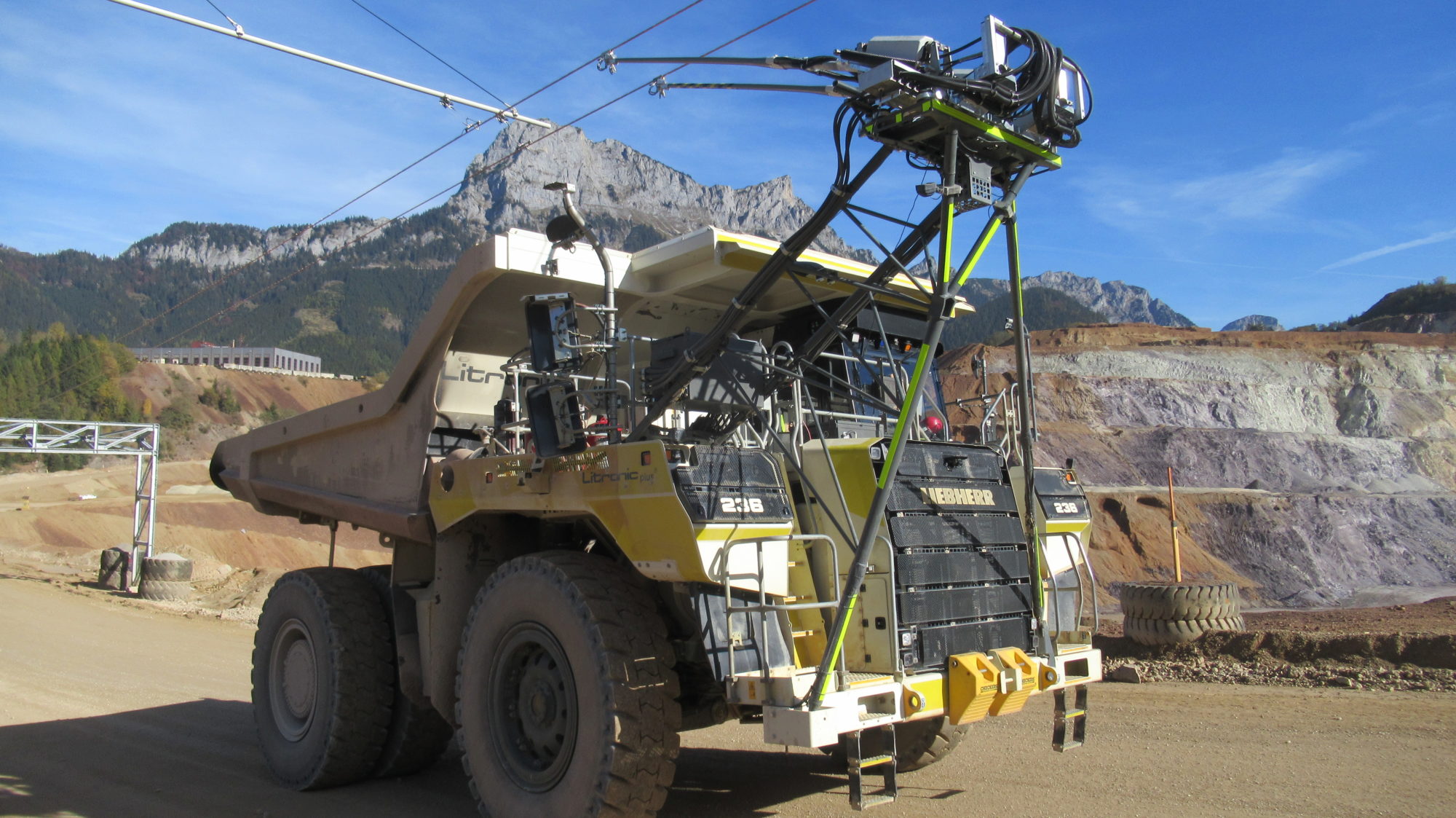The ground breaking ceremony was recently held at the VA Erzberg siderite iron ore mine in Austria of the 5 km trolley line on which a fleet of Liebherr T 236 100 t electric drive haul trucks will operate. The trucks are equipped with “trolley bar” current collectors, allowing trolley operations on curves and even in difficult environmental conditions. Once fully in operation the mine will reduce its overall diesel burn by 66% and CO2 emissions by 4,200 t per annum.
The ceremony took place at the mine in Eisenerz on September 29, 2020. VA Erzberg stated: “Up to now, the transport of more than 13 Mt of rock per year has required enormous amounts of energy of around 4.5 million litres of diesel per year. It will be three million litres less diesel in the future when the successors to the diesel-mechanically operated heavy-duty trucks currently in use do their work on the Erzberg.”
VA Erzberg has been testing the diesel-electric T 236 truck from Liebherr since 2019. The prototype from the 100 t payload class was modified and adapted in such a way that it was prepared for operation with an overhead line. The field test for the truck with pantograph was carried out on a 500 m long catenary test track in the opencast mining area.
The mine statement added: “Until now, no company in this payload class had dared to combine the overhead contact line technology and the newly developed diesel-electric truck. In addition, there were mining-specific challenges in the mining area, such as uneven terrain, the need to drive tight bends, or adverse weather conditions.”
“There are only a few companies in the world that use overhead contact line technology similar to locomotives in truck support. However, we realised very quickly that this existing technology could not be used with us, ”explains Josef Pappenreiter, Technical Director of VA Erzberg. “Our newly developed technology differs both from the overhead line system, namely a pantograph similar to an O-bus, and from the vehicle technology fundamentally to the technology previously available on the market and could only be implemented with the extremely cooperative and innovative partner Liebherr Mining in Colmar.”
The previous test track was 810 m above sea level, but the uppermost sections of the full track will reach a height of 1,055 m. “It will therefore be interesting to observe how the weather conditions in the Eisenerzer Alps in winter conditions affect the overhead line system,” explains Peter Schimek, the Project Manager from VA Erzberg GmbH. Another challenge is the design of the entire electrical engineering, because up to six T 236 trucks can be docked in several places on the overhead line, Schimek added.
In the long term, the Erzberg mine hopes to save around three million litres of diesel per year. The annual reduction in CO2 through the use of diesel-electric trucks with trolleys is around 4,200 t per year. Furthermore, the emission of nitrogen oxides and fine dust is reduced. For the opencast mine itself, the use of the six new Liebherr T 236 truck means an additional electricity consumption of 12.2 GWh in the future.
Pappenreiter comments: “With this technology, we expect sustainable energy-optimiaed production in connection with the further development of opencast mining. Around 13 Mt of rock are currently transported in open-cast mining every year. The cost factor for ore production is correspondingly high. In addition to the positive environmental effects, an investment in this new technology also ensures the sustainable extraction of the important raw material iron ore for domestic steel production. This also corresponds to the EU’s intentions to ensure that the economy is supplied with the production of mineral raw materials within the EU. A total of around 20 million Euros are being invested in the project.”
The T 236 is the first diesel electric truck in its class to incorporate an oil immersed braking system with four corner retarding capabilities, providing reliable braking technology. It also features Liebherr’s Litronic Plus Generation 2 drive system with advanced Active Front End technology. Making efficient use of electrical energy during retarding events, the drive system is able to deliver controlled engine speed with almost no fuel consumption.











